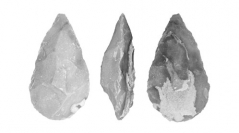

 Comptes Rendus Palevol
13 (6) - Pages 527-542
Comptes Rendus Palevol
13 (6) - Pages 527-542This paper analyses the qualities of the raw materials used in two Palaeolithic sites (Gran Dolina and Galería) of the Sierra de Atapuerca (Burgos, Spain) during the Lower and Middle Pleistocene, and their influence in the development of knapping. These sites offer a chronological sequence that allows us to study the evolution of lithic technology at a local scale during 1.2 Ma. Combining technological analysis and experimental archaeology has proven to be an excellent tool for the understanding and the interpretation of the qualities of raw materials and their relation with the development of the gestures, methods and techniques.
Experimental knapping, Raw materials, Lower and Middle Paleolithic, Sierra de Atapuerca, Lithic technology